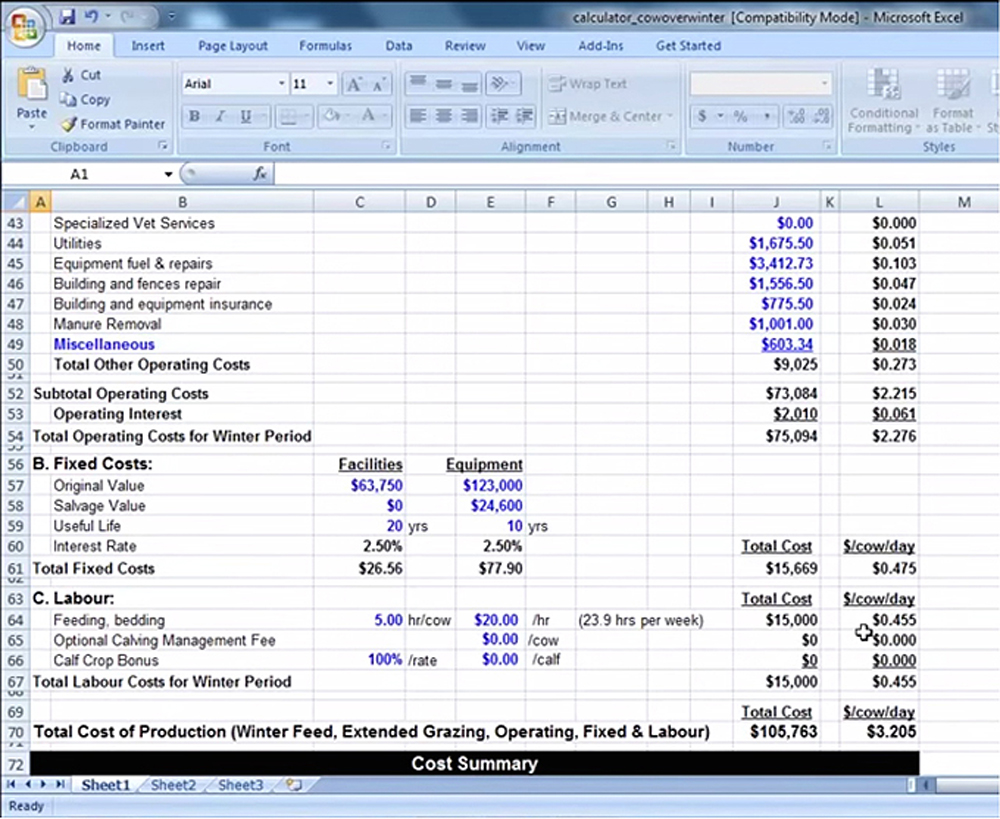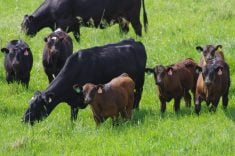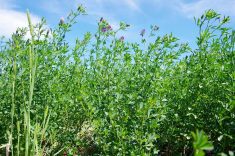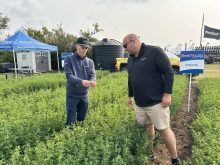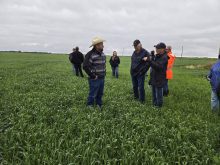Private and customizable worksheets offer Manitoba producers the ability to gain insight into on-farm costs, now and in the future.
Manitoba Agriculture, Food and Rural Development (MAFRD) recently updated its online interactive tools for beef and forage producers.
“We have spent a considerable amount of time developing tools and resources to help with farm management decisions,” said Ben Hamm, livestock business development specialist with MAFRD. “Most of the tools that we develop come from questions we receive from industry and producers themselves.”
The calculators can be found at www.gov.mb.ca/agriculture under the business and economics, financial management and farm software and worksheet tabs.
Read Also

Hands-on with agriculture draws students to AG EX
Urban students flock to MooMania and EweMania at Manitoba AG EX 2025 to get a taste of cattle and sheep production and where their food comes from
The site offers more than a dozen templates touching on cow replacement value, cow overwinter cost, cow share lease, feed and fence plans, hay storage cost planners, standing hay costs, pasture rental rates, calf creep feed, and a number of others.
Customizable inputs
The cow overwintering tool allows producers to input their farm data and measure costs per cow, per day.
“It is important for producers to calculate what they are spending on feeding their cows over winter,” said Hamm. “Once you have entered your figures, the cost summary will break down winter feed costs, yardage, labour and the total costs.”
Users are able to alter data for different scenarios and change rations to ensure accurate outcomes. This spreadsheet also has the option of including a culling management fee.
“You can put any ration you want into this spreadsheet. But, if you are looking at different rations and cost, I encourage you to go to the full cost-of-production worksheet. We have a lot of options you can work through there and bring over to this calculator,” said Hamm.
Planning ahead
MAFRD has most recently developed the cow replacement value calculator that can give producers a glimpse into the future.
“This tool is helpful for producers to put their crystal ball to work and see what the value of their cows will be in the coming years, taking into account the price of calves as well as cull cows,” said Hamm.
Hamm explains that the calculator can help producers see how market prices will affect their profitability by estimating the break-even replacement values.
“This tool will break down what you can pay for these cows and gives a prediction of the coming eight years.”
For those renting or leasing pasture land, MAFRD has come up with the pasture rental rate tool, which is equipped to estimate carrying capacity and rental costs per head, per day.
“Everyone has a different pasture rental rate and when producers are trying to find out rental rates in their areas, we now have a tool that can help them to calculate what the rental rate could or should be given their own specific parameters,” said Hamm.
The tool takes into account land taxes and according to Hamm, can be especially helpful for producers to find the real values of each site, instead of going with area averages.
Answering common questions
Over the past few years, Hamm says MAFRD has received a number of inquiries in the spring on how to calculate the standing value of hay.
“We have two different methods of calculating the standing hay value available online – the hay market method and the hay cost-of-production method. Both are very valid ways of assessing what that hay is worth,” he said.
Producers are encouraged to visit the site and experiment with these free tools that Hamm says can give great insight into farm operations and provide the ability to pinpoint areas that can be improved to cut costs.
Each worksheet also contains contact information for MARFD staff that are available to assist with questions and case specifics.


